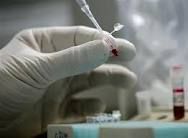
Esther Hockenstein's life story is all about resilience. The Montreal resident lost many family members during the Holocaust and she was one of the last children born in a Nazi concentration camp. Now Esther, who turns 70 this year, is battling the most fatal of women's cancers-ovarian cancer.
"My mother was diagnosed with breast cancer and died three years later at age 49. She never underwent genetic testing since it was not available at that time. Neither did I and that was a big mistake," says Hockenstein with regret. She carries a mutation in the gene BRCA1 that puts her and her family members at higher risk for ovarian cancer. However, she was not aware of that until she was diagnosed with the disease. Hockenstein is currently undergoing treatment.
The genes BRCA1 and BRCA2 are known to play a significant role in hereditary breast and ovarian cancers. Recent media attention has focused on American actress Angelina Jolie's decision to have her breasts, ovaries and fallopian tubes surgically removed after genetic testing for such cancers. Like Jolie, many women who have a family history of breast and ovarian cancer get tested for one of the two genes.
A new study conducted by Montreal researchers and led by Dr. Patricia Tonin, associate leader of the Cancer Research Program at the Research Institute of the McGill University Health Centre (RI-MUHC), advocates that all women with ovarian cancer-not only the ones with a family history of cancer-should be offered genetic testing. Some clinics have broadened their criteria and are offering genetic testing to a larger population of women, but it is still not part of standard care across Quebec.
According to Dr. Tonin, women with the most common form of ovarian cancer should be automatically given the screening option as this would help identify carrier women in their families and allow health professionals to offer risk reducing strategies for their relatives.
(...)